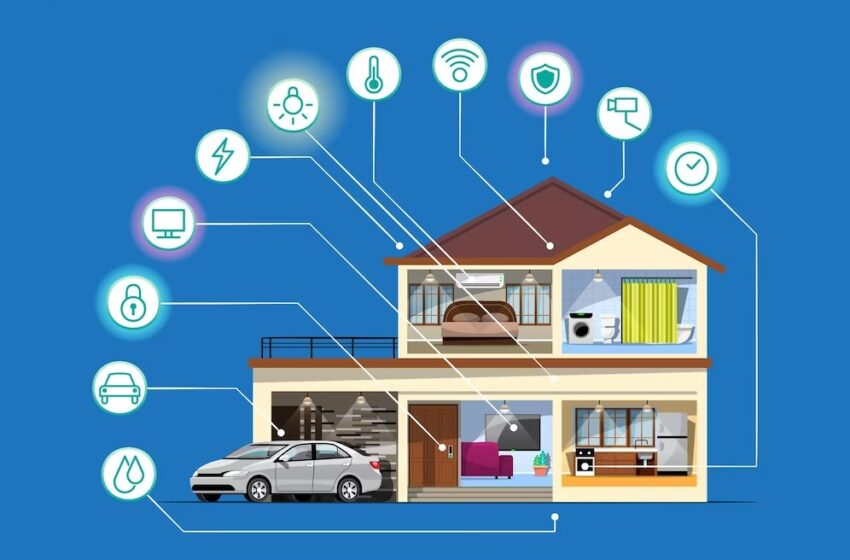The Proliferation of IoT Devices in Smart Home Technology

The concept of a smart home, once considered a luxury, has swiftly become a commonplace aspect of our daily lives, largely due to the proliferation of Internet of Things (IoT) devices. These devices, which connect to the internet and each other, are revolutionizing the way we interact with our living spaces, making them more convenient, energy-efficient, and secure. This blog explores the burgeoning growth of IoT devices in smart home technology, highlighting key areas of impact, challenges, and future directions.
Transforming Home Automation
The heart of the smart home revolution lies in automation, where IoT devices take center stage, offering seamless control over various home systems.
Key Areas of Impact:
- Lighting and climate control: Smart thermostats and lighting systems adjust automatically to your preferences and can be controlled remotely, enhancing comfort while reducing energy consumption.
- Security and surveillance: IoT-enabled cameras, door locks, and alarm systems provide real-time monitoring and alerts, offering unparalleled security and peace of mind.
- Entertainment: Smart TVs, speakers, and streaming devices are interconnected, creating personalized entertainment experiences.
Enhancing Convenience and Efficiency
The convenience offered by IoT devices in smart homes is unparalleled, significantly enhancing the quality of life and operational efficiency.
Examples:
- Voice assistants: Devices like Amazon Echo and Google Home allow for voice-controlled management of various smart home devices, making multitasking easier than ever.
- Smart appliances: Refrigerators, washing machines, and ovens connected to the internet can be programmed and monitored remotely, saving time and energy.
Energy Management and Sustainability
A critical advantage of IoT devices in smart homes is their ability to contribute to energy conservation and sustainability.
Impactful Technologies:
- Energy monitoring systems: Provide detailed insights into energy usage patterns, identifying opportunities for savings.
- Automated energy-saving settings: IoT devices can adjust power usage based on peak demand times, occupancy, and even weather conditions, significantly reducing wastage.
Health and Wellness Monitoring
IoT devices are increasingly being used to monitor health and enhance wellness within the smart home environment.
Innovative Uses:
- Wearable health devices: Track vital signs and fitness metrics, integrating data with other smart home systems for a holistic approach to health.
- Environmental monitoring: Sensors that detect air quality, humidity, and temperature help in maintaining an optimal living environment, crucial for individuals with health conditions like asthma.
Challenges and Considerations
Despite the numerous benefits, the proliferation of IoT devices in smart homes is not without challenges.
Privacy and Security Concerns:
- The interconnectedness of IoT devices poses significant privacy and security risks, with potential vulnerabilities that could be exploited by hackers.
- Data protection: Ensuring the security of personal data collected by smart home devices remains a paramount concern for users and manufacturers alike.
Interoperability and Standardization:
- Compatibility issues: With a wide array of manufacturers and protocols, ensuring devices work together seamlessly is a challenge.
- Standardization efforts: Industry-wide standards are needed to facilitate interoperability and enhance user experience.
The Future of IoT in Smart Homes
The future of IoT in smart homes looks promising, with technological advancements expected to drive further innovation and adoption.
Emerging Trends:
- Integration of AI and machine learning: These technologies will enable smart homes to learn from user behavior, further automating and personalizing the home environment.
- Growth of 5G: The rollout of 5G networks will enhance the connectivity and functionality of IoT devices, enabling more complex and responsive smart home ecosystems.
A Vision of Ubiquitous Computing:
- The concept of ubiquitous computing, where smart technology is seamlessly integrated into every aspect of our living spaces, is becoming a reality. In the future, smart homes will not only be about controlling devices but also about creating environments that adapt to and anticipate the needs of the inhabitants.
Conclusion
The proliferation of IoT devices is transforming the concept of home, making smart homes more accessible and offering unprecedented levels of convenience and efficiency. As we move forward, the focus will be on overcoming challenges related to security, privacy, and interoperability, ensuring that the benefits of smart home technology can be fully realized. With the continuous advancements in IoT, AI, and connectivity technologies, the smart home of the future will be more intuitive, efficient, and, most importantly, centered around the needs and well-being of its inhabitants.
(Nominate Now: Join us to spotlight your achievements! Be part of the elite in the business and finance community. Exciting opportunities await!)






